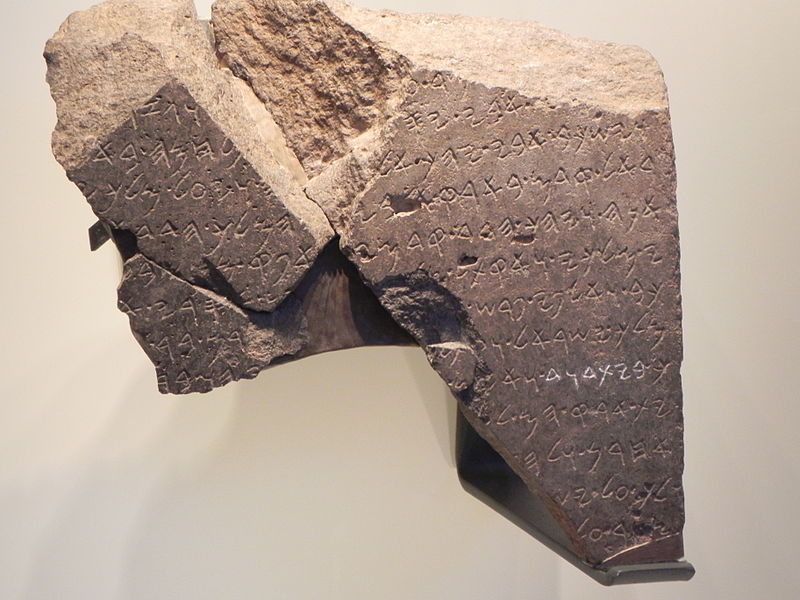 NEW YORK – A nearly 3,000-year-old artifact currently on display in New York City confirms the historicity of King David and contradicts the secular belief that the biblical monarch never actually existed.
NEW YORK – A nearly 3,000-year-old artifact currently on display in New York City confirms the historicity of King David and contradicts the secular belief that the biblical monarch never actually existed.
In recent years, some historians and archaeologists have claimed that King David of the Bible was an entirely fictional character. Others contend that the narratives of David’s kingdom found in 2 Samuel and 1 Chronicles are inaccurate embellishments of history.
“The most popular legends about David are the creation of generations who lived long after him,” wrote Jacob Wright of Emory University in an online article. “David’s slaying of Goliath, his exploits in the court of Saul, his relationship to Jonathan and Michal, his fate as a fugitive, his military triumphs abroad, his affair with Bathsheba, his civil war with Absalom, his succession by Solomon—all these colorfully depicted episodes were created by later generations of writers.”
However, an artifact currently on display at the Metropolitan Museum of Art in New York directly challenges these allegations. Known as the Tel Dan Stela, the artifact is a ninth-century B.C. stone slab that features carefully-incised Aramaic text. The artifact’s inscriptions commemorate an Aramean king’s military expeditions and reference both the “king of Israel” and the “king of the House of David.”
Experts say the relic, which was discovered in 1993, provides nearly incontrovertible proof of King David’s existence. Henry Smith, Jr., Director of Development for the Associates for Biblical Research, told Christian News Network that the inscription provides “powerful extra-biblical evidence that is in accord with the biblical presentation of David as the King of Israel.”
According to Smith, the Tel Dan Stela is “highly significant,” because it corroborates the Bible’s historical accounts. However, Smith said the artifact is not the only archaeological evidence that supports the scriptural narrative of David’s reign.
“In the 19th century, the Mesha Stela (also known as the Moabite Stone) was discovered in Jordan, and references ‘the house of David,’” he stated. “This important discovery is often ignored or dismissed by liberal scholars and skeptics across the board. Further, Egyptologist Kenneth Kitchen has identified an inscription in the Temple of Amun at Karnak that he believes reads ‘the heights of David.’”
All these discoveries point to one conclusion: King David actually existed.
“The Tel Dan Stela not only mentions the ‘house of David’ as well, but is a hostile witness to David’s historicity,” Smith added. “That is, it was inscribed by enemies of Israel from Aram. Further, it shows that kings who were enemies of Israel from later periods after David’s death recognized that the kings of Israel were of David’s lineage.”
Despite the historical evidence, many scholars and archaeologists still reject the Bible’s historical accounts. Smith suggested this rejection is due to several factors.
“First, they often ignore the actual chronology that the Bible provides for the events it reports,” he asserted. “Thus, they try to incorrectly correlate events in the Bible with archaeological evidence that is not from the actual period when the biblical events took place. We find this especially with respect to the book of Joshua and the conquest of Jericho, Ai and Hazor.”
“Second,” he continued, “their foundational presupposition is that the text of the Old Testament was redacted, amended and changed by editors and compilers with human-centered agendas, political and otherwise. These extensive redactions supposedly took place over many centuries.”
According to Smith, “there is not one shred of proof” for these elaborate, anti-biblical theories.
Smith further told Christian News Network that archaeological evidence is subject to a wide range of interpretations, which can often be biased or inaccurate.
“The problem is that archaeology yields much more material culture than it does actual written texts, and material culture is subject to wide arrays of interpretation,” he said. “Material culture does not ‘speak’ in the same way a written text can speak, and thus, it requires us to be cautious about the way we understand the material culture of antiquity.”
Smith encourages Christians to consider the reliability of the Bible and to realize that the gospel message is grounded in history.
“The God of Scripture is the Creator, Sustainer, and Sovereign Lord of all history,” he stated. “The Bible is filled with references to real people, real events and real chronology. Christians must take Scripture seriously in this regard. After all, Jesus Christ was born into this fallen world to redeem His people and the entire cosmos, at a particular time and in a particular place. He is the fulfillment of the entire Old Testament revelation. We should be reminded of what Paul wrote to the Galatian church: ‘When the time had fully come, God sent His Son…’”
Editor’s Note: The Tel Dan Stela will be on display through January 4 at the Metropolitan Museum of Art’s “Assyria to Iberia at the Dawn of the Classical Age” exhibit. For more information about the artifact, please visit the website of the Associates for Biblical Research.
Become a Christian News Network Supporter...


